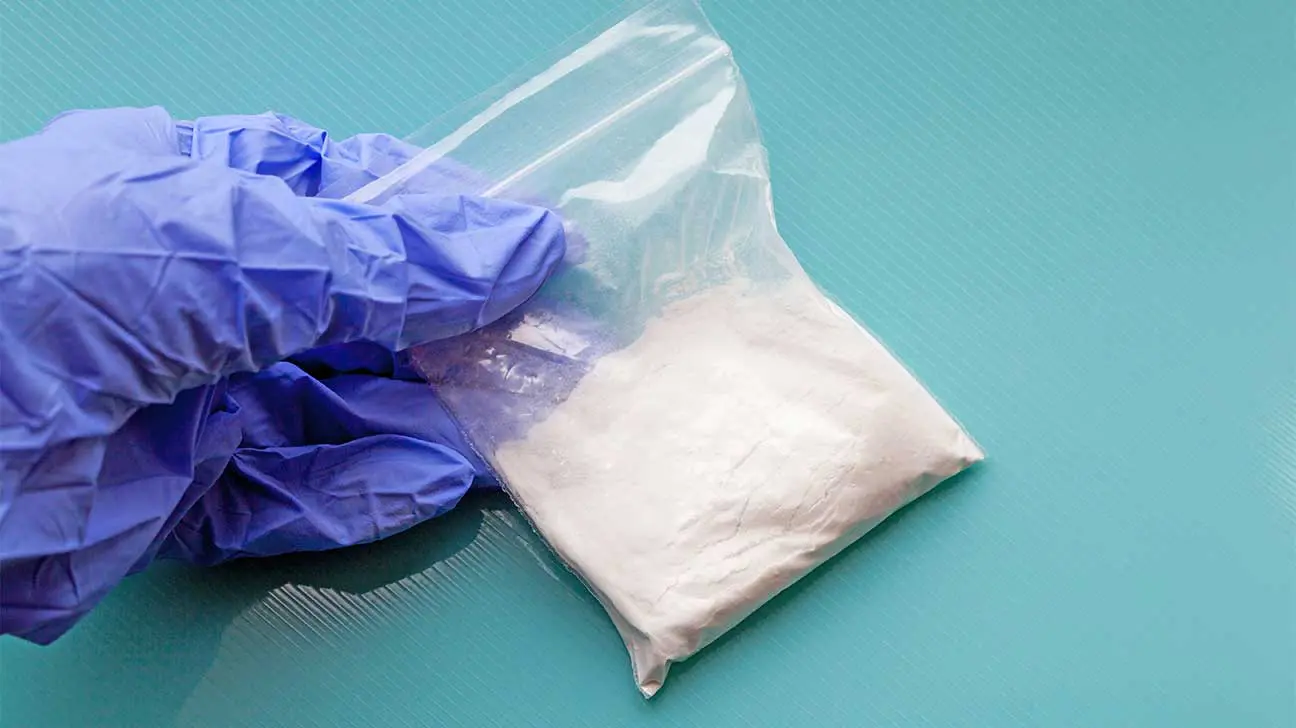
If someone close to you is abusing cocaine, it may help to know what the illicit drug looks like and how it smells, in order to identify it. Knowing how to identify drugs of abuse can be helpful if you ever have to get emergency medical attention for your loved one due to overdose, and if you plan on helping them get treatment for a cocaine drug addiction.
There are so many drugs on the illicit market, from drugs like cocaine and heroin to prescription drugs. Cocaine is originally derived from the coca leaves of coca plants native to South America. However, when people buy drugs off the street, they are rarely getting pure cocaine. Instead, they may get some combination of cocaine and other additives, such as baking soda.
Cocaine may also contain more powerful drugs, like the potent opioid fentanyl, in order to create more powerful effects. If a person does not know they are getting a drug laced with another, more powerful drug, this could be dangerous, possibly leading to overdose or even death.
For these reasons, identifying cocaine or crack cocaine by smell or appearance can be very important.
How To Identify Cocaine By Smell
First, it’s important to understand that you should never smell or touch drugs without wearing gloves, or bring drugs close to your face to smell, as you could inhale them. If they contain harmful additives, this could have negative side effects.
It may be best when you find drugs of abuse in a family member’s belongings or room to leave the drugs where they are after identifying them, at least until you can safely remove them.
Powder Vs. Crack Cocaine Smell
What cocaine smells like will be affected by the type of cocaine. Powder cocaine, which is typically snorted or dissolved into a solution and injected, is one form of the drug. Another form is freebase cocaine, which results from removing the hydrochloride from the drug, leaving a solid, crystal rock that people smoke. This form is also known as crack cocaine.
Powder Cocaine Smell
Powder cocaine gives off an almost sweet, flower-like scent. However, you may also pick up on scents of additives within the drug, which may give it a metallic or chemical-like odor. Common additives to cocaine include baking soda, flour, corn starch, talcum powder, and acetone or other solvents.
Crack Cocaine Smell
When people smoke crack cocaine, they melt the solid rock and inhale the vapors. Some have associated this smell with burnt plastic, burnt rubber, or a skunky smell.
Cocaine Paraphernalia
If someone is abusing cocaine, you may also be able to identify certain paraphernalia they have around for drug use. These items help them administer the drugs and vary by type of drug abuse.
For example, if a person is snorting cocaine, they may have items that aid in snorting, such as rolled up and cut straws or hollowed-out pens. If they are smoking crack, they may have pipes or used pieces of tin or aluminum foil.
Powder cocaine is often sold in small Ziploc or sandwich-sized plastic bags. You may also see a white powder residue left behind on flat surfaces, such as desks, tables, or mirrors.
Signs Of Cocaine Use
Many of the side effects of cocaine use may not be noticeable right away. Cocaine is a stimulant and generally leads to feelings of euphoria, increased energy, and alertness.
However, if a person develops a cocaine addiction, these effects may be more pronounced and include other, more adverse side effects.
These can include:
- feelings of anger, irritability, nervousness, or paranoia
- being preoccupied with drug use
- avoiding or forgetting everyday responsibilities
- lying, hiding drug abuse, or stealing
- other, uncharacteristic behavior
- experiencing cravings when not using cocaine
Cocaine does not lead to dangerous withdrawal symptoms, but long-term effects can lead to more serious health risks, including heart attack and stroke with long-term use.
Addiction treatment at a qualified treatment center can help you or your loved one manage substance use and break addictive behaviors in order to enter recovery.
Treatment Options For Cocaine Addiction
If you found cocaine in a loved one’s belongings and are trying to identify it by look or smell, it may be time to consider talking to them about the possibility of substance abuse treatment. Your loved one is not alone — more than 760,000 people aged 26 and older, and more than 200,000 people aged 18-25, had a cocaine use disorder in the United States in 2018.
Drug rehab centers offer a number of treatment options to help people learn to manage cocaine use, many of which can be customized and will address cocaine addiction directly. For help with finding a treatment facility that fits your or a loved one’s specific needs, contact us today.
Addiction Resource aims to provide only the most current, accurate information in regards to addiction and addiction treatment, which means we only reference the most credible sources available.
These include peer-reviewed journals, government entities and academic institutions, and leaders in addiction healthcare and advocacy. Learn more about how we safeguard our content by viewing our editorial policy.
- National Institute on Drug Abuse (NIDA) — Cocaine DrugFacts
https://www.drugabuse.gov/publications/drugfacts/cocaine - Substance Abuse and Mental Health Services Administration (SAMHSA) — Key Substance Use and Mental Health Indicators in the United States: Results from the 2018 National Survey on Drug Use and Health
https://www.samhsa.gov/data/sites/default/files/cbhsq-reports/NSDUHNationalFindingsReport2018/NSDUHNationalFindingsReport2018.pdf - United States Drug Enforcement Administration (DEA) — Cocaine
https://www.dea.gov/factsheets/cocaine - U.S. National Library of Medicine: MedlinePlus — Cocaine
https://medlineplus.gov/cocaine.html


